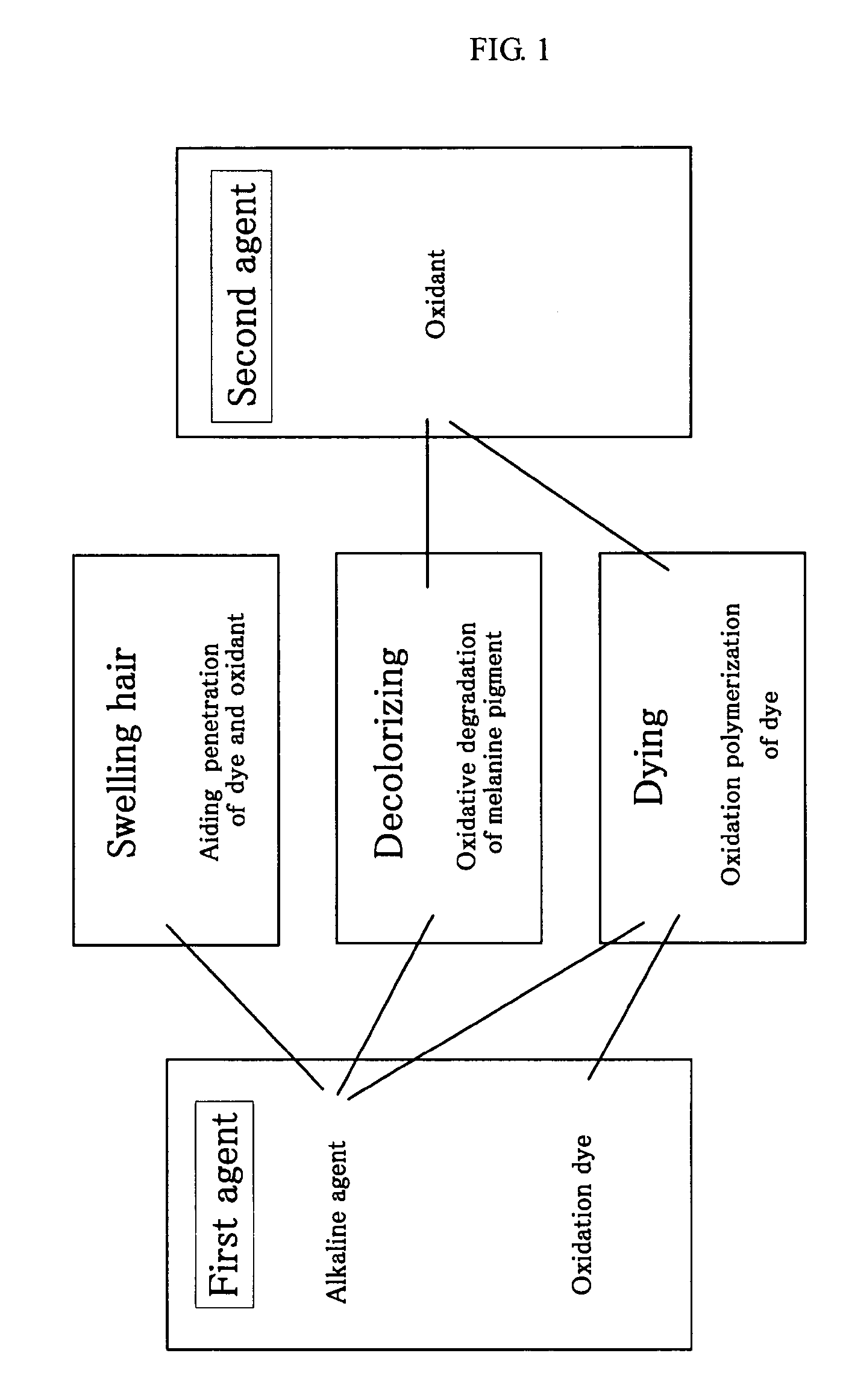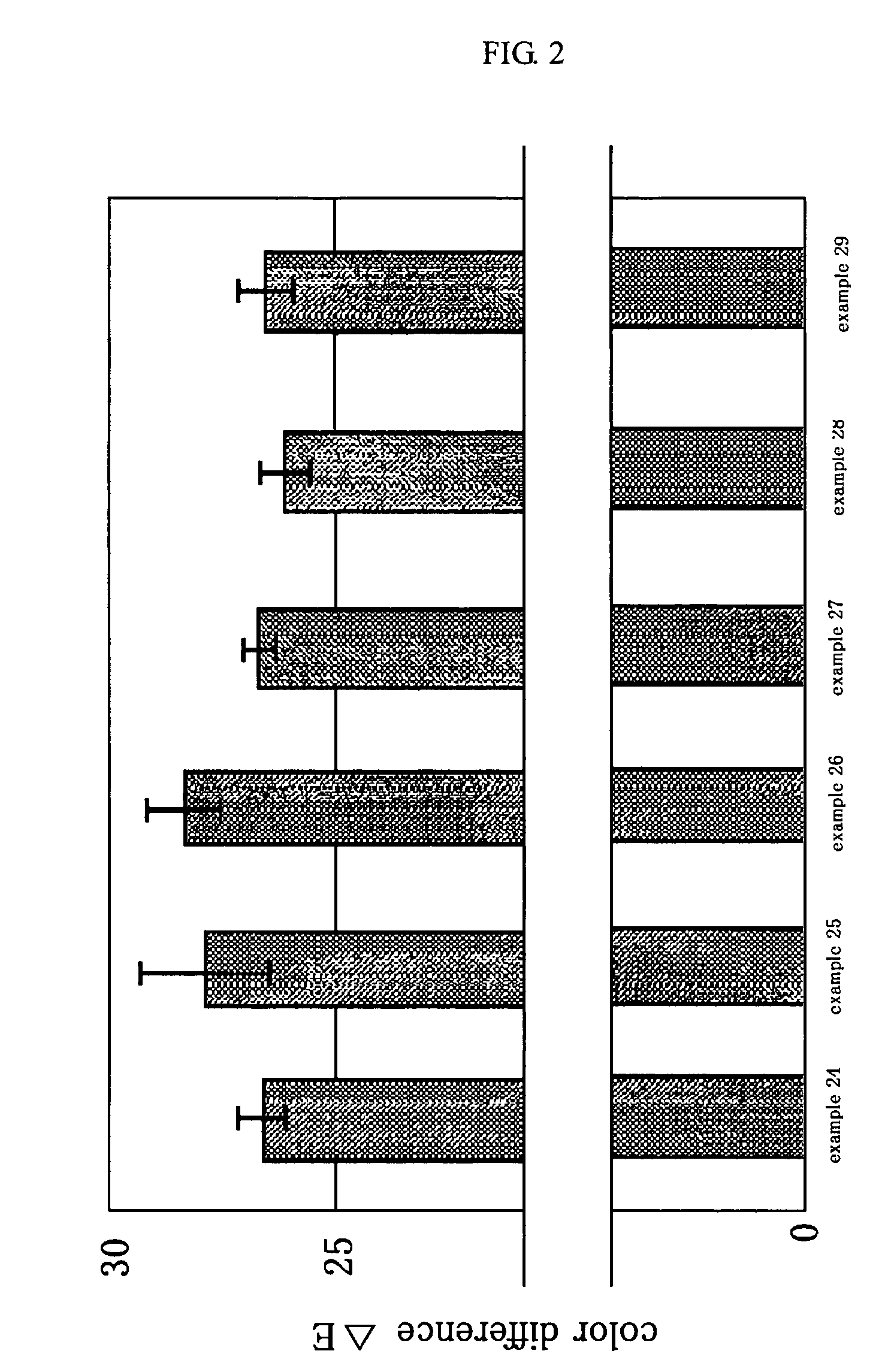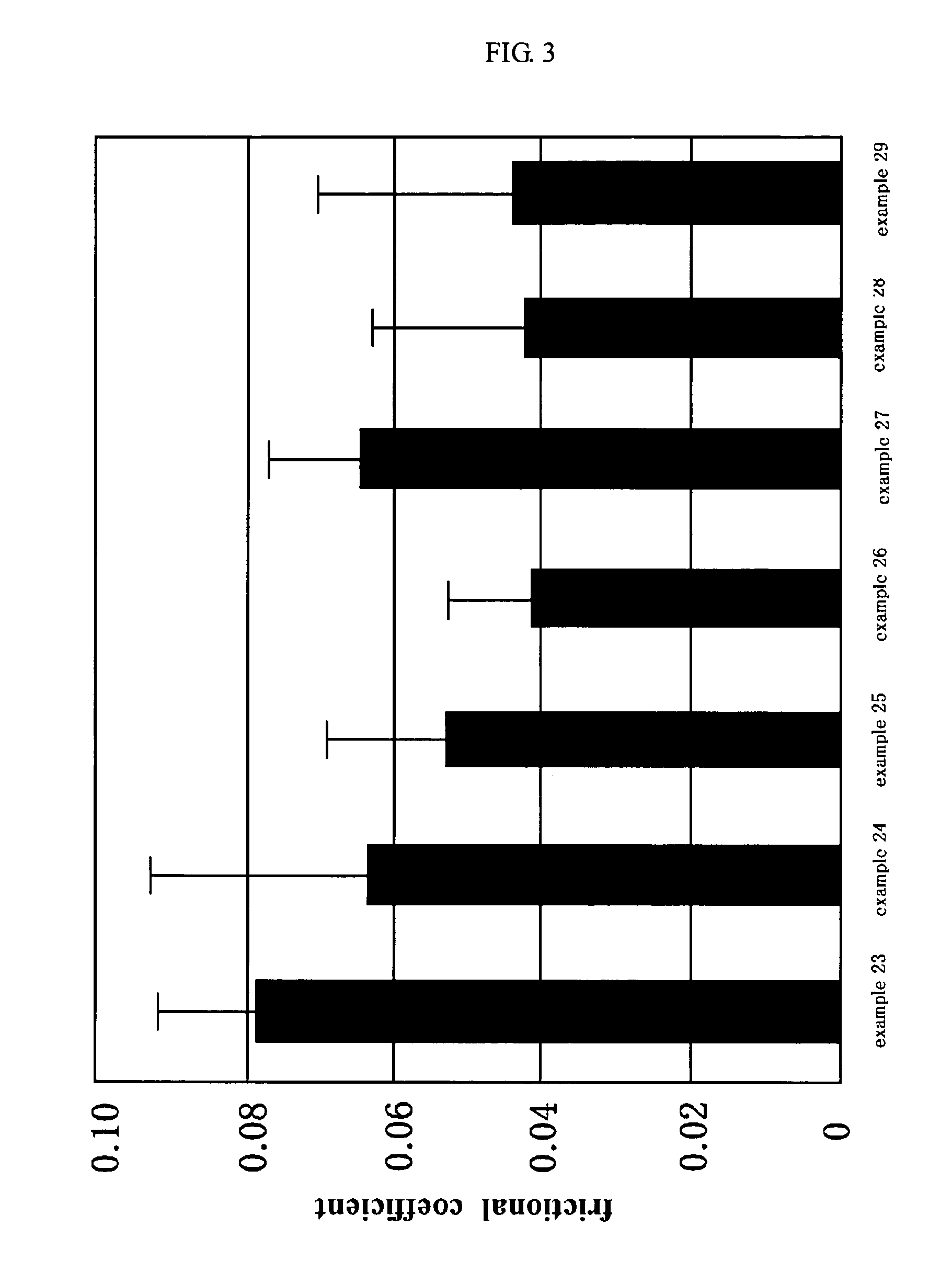Hair dye composition
a dyeing composition and composition technology, applied in the direction of dyeing process, hair cosmetics, textiles and paper, etc., can solve the problems of insufficient decolorizing performance, eye irritation, stiffness on the hair, etc., and achieve the effect of promoting decolorizing effect and without exerting substantial damage on the hair
- Summary
- Abstract
- Description
- Claims
- Application Information
AI Technical Summary
Benefits of technology
Problems solved by technology
Method used
Image
Examples
embodiment 1
[0126]
Cream type hair dye(prescription)weight %First agent (Cream state)Monoethanolamine5.0Stearyltrimethylammonium chloride2.0Cetyl alcohol7.0Stearyl alcohol3.0POE(20) octhyl dodecylether0.2Hexylene glycol3.0Squalane5.0Amino-modified polymer silicone2.0(SM8702C ™: manufactured byDow Corning Toray Silicone)Collagen protein hydrolyzate2.0Wild oat extract0.1Sodium dithionite0.1Disodium edentate dehydrate0.2Paraphenylendiamine1.0Resorcin0.52,4-diaminophenoxyethanol chlorate0.1Purified waterRemainderSecond agent (Cream state)Hydrogen peroxide water (31%)16.0Stearyltrimethylammonium chloride2.0Cetyl alcohol7.0Stearyl alcohol3.0POE(20)octhyl dodecyl ether0.2Methylparaben0.1Phosphoric acid0.2Disodium hydrogenphosphate0.2Purified waterRemainderMixing ratio First agent:Second agent = 1:1Higher alcohol / Quaternary ammonium salt cationic surfactant (Molar ratio) = 6.96
embodiment 2
[0127]
Emulsion type hair dye(prescription)weight %First agent (Cream state)Monoethanolamine6.0Monopropanol amine3.0Behenyltrimethylammonium chloride2.4Stearyl alcohol8.0POE(20) stearyl ether1.2Isoprene glycol3.0Polyethylene glycol5.0High polymerized dimethylpolysiloxane0.5Keratin protein hydrolyzate2.0Jojoba alcohol0.1Urea0.5Sodium dithionite0.1Disodium edentate dehydrate0.2Toluene-2,5-diamine0.5Orange II0.1HC RED BN0.05Paranitro meta phenylenediamine sulfate0.1Purified waterRemainderSecond agent (Emulsion state)Hydrogen peroxide water (35%)14.0Behenyltrimethylammonium chloride0.2Stearyl alcohol2.0POE(4) cetyl ether0.1Phenacetin0.1Disodium edentate dehydrate0.2Phosphoric acid0.2Purified waterRemainderMixing ratio First agent:Second agent =1:2Higher alcohol / Quaternary ammonium salt cationic surfactant (Molar ratio) = 10.03
embodiment 3
[0128]
Emulsion type hair dye(prescription)weight %First agent (Emulsion state)Monoethanolamine4.0Aqueous ammonia0.7Distearyldimethylammonium chloride1.0Cetyl alcohol3.5Stearyl alcohol1.5Propylene glycol10.0Fluid paraffin2.0Cationized hydroxyethyl cellulose0.5Glycerol monostearate1.0Cyclic silicone pentamer oligomer5.0Sodium dithionite0.1Soybean lecithin0.5Disodium edentate dehydrate0.2Paranitroortho phenylendiamine1.0Basic Brown 160.05HC Orange0.05Purified waterRemainderSecond agent (Emulsion state)Hydrogen peroxide water (35%)16.0Distearyldimethylammonium chloride1.0Cetyl alcohol1.0Stearyl alcohol1.0Methylparaben0.1Phosphoric acid0.2Disodium hydrogenphosphate0.2Purified waterRemainderMixing ratio First agent:Second agent = 1:1.5Higher alcohol / Quaternary ammonium salt cationic surfactant (Molar ratio) = 4.59
PUM
| Property | Measurement | Unit |
|---|---|---|
| molar ratio | aaaaa | aaaaa |
| molar ratio | aaaaa | aaaaa |
| molar ratio | aaaaa | aaaaa |
Abstract
Description
Claims
Application Information
 Login to View More
Login to View More - R&D
- Intellectual Property
- Life Sciences
- Materials
- Tech Scout
- Unparalleled Data Quality
- Higher Quality Content
- 60% Fewer Hallucinations
Browse by: Latest US Patents, China's latest patents, Technical Efficacy Thesaurus, Application Domain, Technology Topic, Popular Technical Reports.
© 2025 PatSnap. All rights reserved.Legal|Privacy policy|Modern Slavery Act Transparency Statement|Sitemap|About US| Contact US: help@patsnap.com



